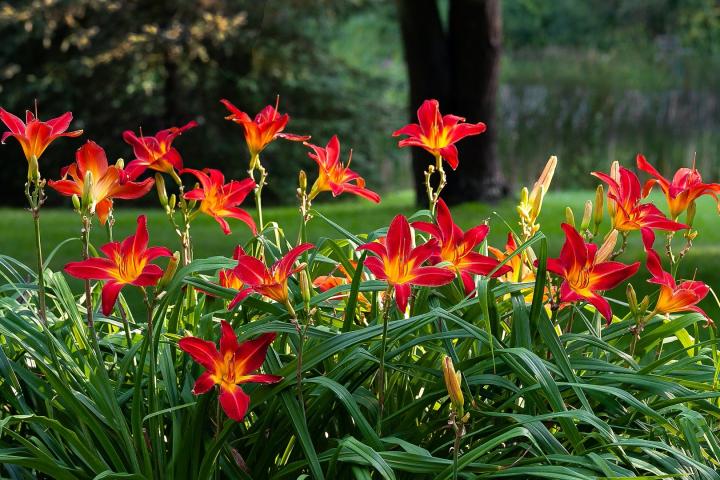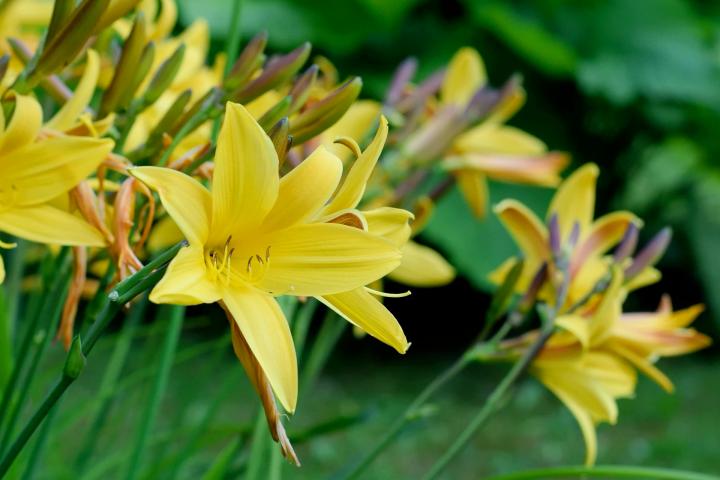
Sign up for our daily newsletter to get gardening tips and advice.
Planting, Growing, and Caring for Daylilies
Daylilies are edible and have a long history in the kitchen. The tender foliage was eaten as a spring green, the buds and flowers were eaten raw and added to soups, and the swollen portions of the root were boiled and eaten. All parts have a mild peppery taste and act as a thickening agent when cooked in stews, soups, or sauces.
- Try sautéeing daylily buds in some butter and garlic. They taste like a cross between green peas and asparagus.
- Dip daylily buds in a light batter and deep-fry them. Sprinkle with salt, and you have a special summer treat!
ADVERTISEMENT
Daylilies are on the list of invasive plants in our area (Ontario Canada). It’s a good idea to check to make sure any non-native is invasive in your area, before planting. There is a lot of good information out there about how invasive plants are a real problem. There are also many beautiful native alternatives to these invasive lilies - the Michigan lily, for instance. Native plant species tend to benefit a much wider range of native fauna without harming the environment.
Enjoyed the read! Planting my first day lilies soon
How do you winterize day lillys? Do you have to cut them back?
Hi Nancy,
There is not anything you need to do for your daylilies before winter. Once the flowers have died back, you can cut the stems and foliage to the ground in the fall or in the spring. There is no benefit to leaving the foliage until the spring, so if you want a more tidy look to your garden area, cut back in the fall. The foliage just needs to be removed before new growth emerges in the spring.
I have a huge variety of daylilies, and this year with all the wet weather, they have a lot of dead leaves. As I pull out those dead leaves, I find nests of snails and lots of slugs on the base, and up the leaves. Probably should have pulled out the dead leaves earlier. Any idea how to deter those creatures? I have an abundance of slugs and snails, on everything from veggies to flowers, and taking all my time in picking them off.
Depending if you are in an area that would allow them, ducks will eat a large number of slugs daily, and will get rid of other pests too!
Check out this helpful guide for removing slugs and snails from your garden.
The first photo of the orange lily is a HORRIBLE invasive lily, the ditch lily or roadside lily! DO NOT plant! This is a poorly written article that leaves out critical information that it an invasive nightmare choking out Native American plants and in my garden it took over EVERYTHING and I spent years trying to dig it out. If you do not get each root or ends, it will regenerate into a new plant. AVOID FULVA lilies!
Thank you for your comments; we appreciate the critique. Be sure to check out our article about non-native plants, including Daylilies for more information.
In late summer a tiny plant is produced at the top of a scape. It can be planted and will produce a viable plant.











